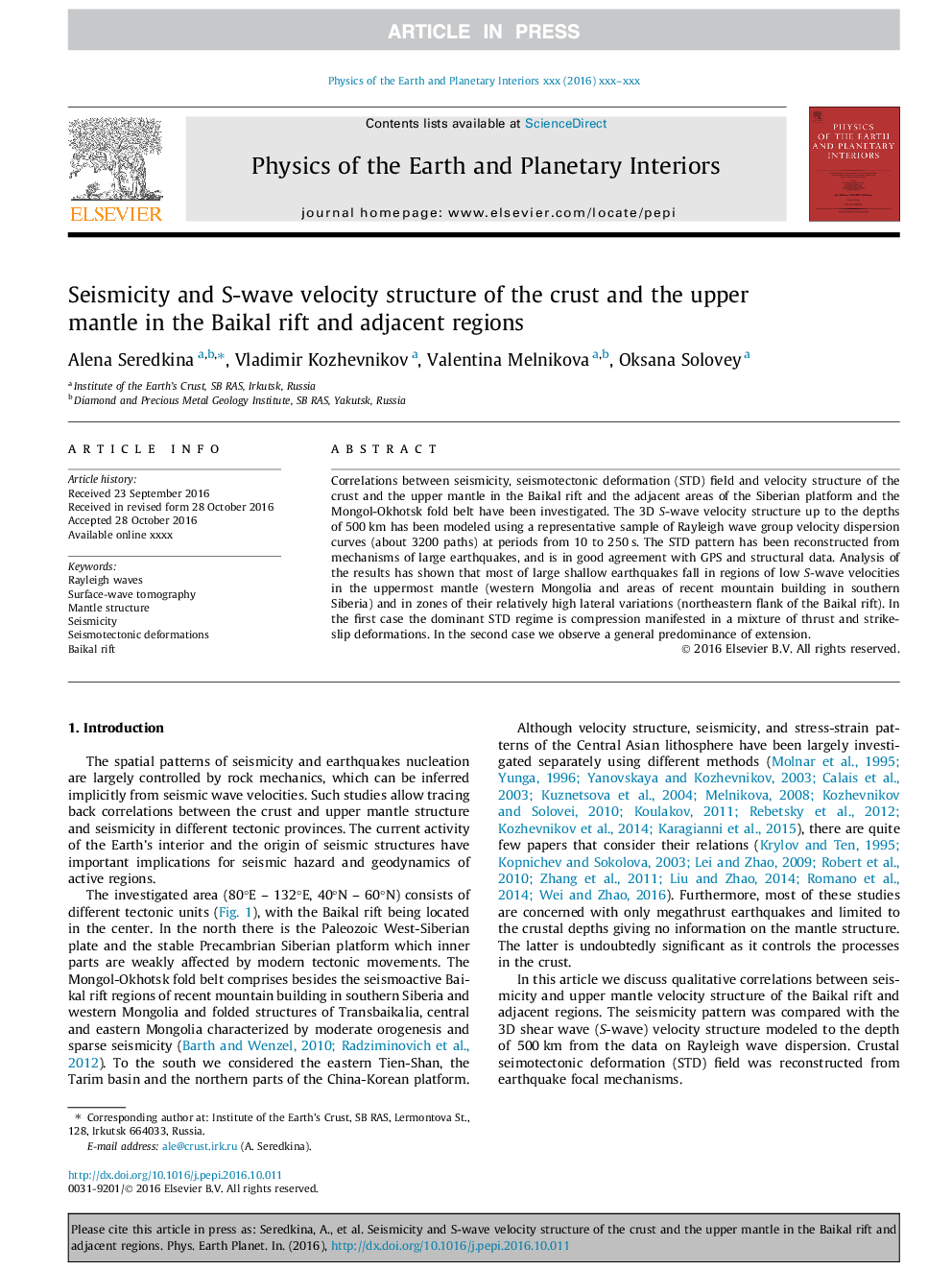| Article ID | Journal | Published Year | Pages | File Type |
|---|---|---|---|---|
| 5787330 | Physics of the Earth and Planetary Interiors | 2016 | 9 Pages |
Abstract
Correlations between seismicity, seismotectonic deformation (STD) field and velocity structure of the crust and the upper mantle in the Baikal rift and the adjacent areas of the Siberian platform and the Mongol-Okhotsk fold belt have been investigated. The 3D S-wave velocity structure up to the depths of 500Â km has been modeled using a representative sample of Rayleigh wave group velocity dispersion curves (about 3200 paths) at periods from 10 to 250Â s. The STD pattern has been reconstructed from mechanisms of large earthquakes, and is in good agreement with GPS and structural data. Analysis of the results has shown that most of large shallow earthquakes fall in regions of low S-wave velocities in the uppermost mantle (western Mongolia and areas of recent mountain building in southern Siberia) and in zones of their relatively high lateral variations (northeastern flank of the Baikal rift). In the first case the dominant STD regime is compression manifested in a mixture of thrust and strike-slip deformations. In the second case we observe a general predominance of extension.
Related Topics
Physical Sciences and Engineering
Earth and Planetary Sciences
Geophysics
Authors
Alena Seredkina, Vladimir Kozhevnikov, Valentina Melnikova, Oksana Solovey,
